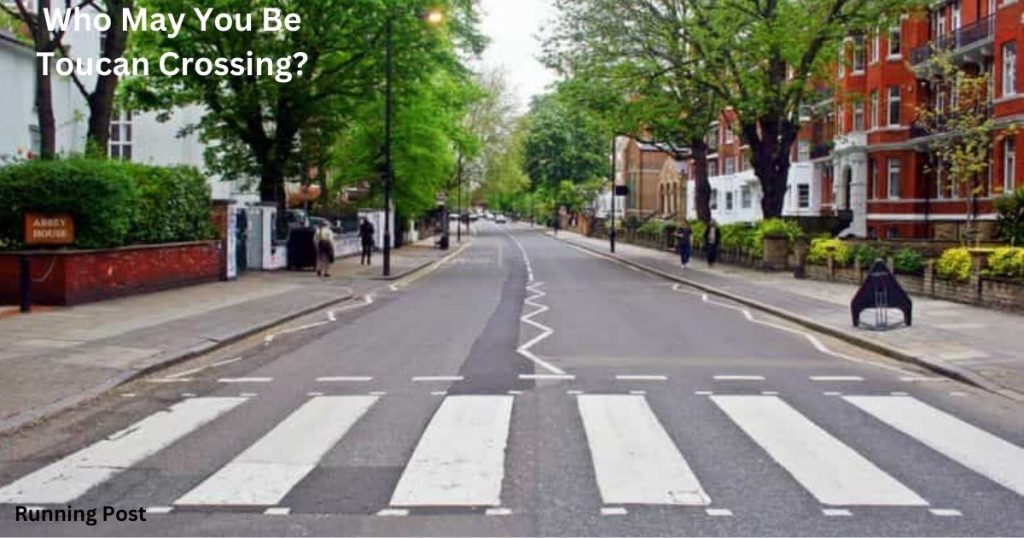| A: Cyclists and pedestrians | B: Only motor vehicles | C: Motor vehicles and bus drivers | D: Only pedestrians |
Introduction
Toucan crossings are a key feature of modern road safety, designed to facilitate the movement of both cyclists and pedestrians across busy roads. Their name comes from the fact that they are meant to be used by “two can cross” at the same time—cyclists and pedestrians. Understanding who can use these crossings and their specific purpose is crucial for both road users and drivers.
What is a Toucan Crossing?
Definition and Basic Explanation
A toucan crossing is a type of pedestrian crossing that allows both cyclists and pedestrians to cross the road safely. Unlike traditional pedestrian crossings, toucan crossings are equipped with traffic signals that manage the flow of both types of road users. They are often found in urban areas where there is a high volume of foot and cycle traffic.
Key Features of a Toucan Crossing
Toucan crossings are distinguished by their specific design features. They typically include signal-controlled pedestrian and cycle crossings with push buttons, similar to other crossings. The key feature is their ability to accommodate both cyclists and pedestrians at the same time. The signals are designed to ensure that both cyclists and pedestrians can cross safely without having to wait for separate phases.
Who Can Use a Toucan Crossing?
Cyclists
Toucan crossings are particularly beneficial for cyclists. Unlike regular pedestrian crossings, which may not be ideal for bicycles due to the need to dismount, toucan crossings are designed to allow cyclists to remain on their bikes while crossing. This feature is essential in encouraging cycling as a mode of transportation.
Why Cyclists Are Allowed
Cyclists are allowed to use toucan crossings because these crossings are specifically designed to integrate the needs of both pedestrians and cyclists. By accommodating bicycles, toucan crossings help promote cycling as a safer and more practical option for urban travel, reducing the need for cyclists to navigate busy intersections separately.
Benefits for Cyclists
The primary benefit for cyclists using toucan crossings is safety. Cyclists can cross roads without having to dismount, which reduces the risk of accidents and improves the efficiency of their journey. Additionally, the dedicated signals help prevent conflicts with motor vehicles, making the crossing experience smoother and safer.
Pedestrians
Pedestrians also benefit from toucan crossings, as they provide a safe and designated crossing point. The design of toucan crossings ensures that pedestrians have a clear and controlled path across the road.
Accessibility for Pedestrians
Toucan crossings are designed to be accessible for all pedestrians, including those with mobility challenges. The crossings are equipped with features such as audible signals and tactile paving to aid visually impaired individuals. This ensures that everyone can use the crossing safely and independently.
Safety Features for Pedestrians
Safety features at toucan crossings include clearly marked pedestrian areas, traffic signals that provide ample time for crossing, and dedicated crossing phases that prevent conflicts with motor vehicles. These features are designed to enhance pedestrian safety and make crossing roads more predictable and secure.
Who May You Be Toucan Crossing?

Clarification of the Term “Toucan Crossing”
The term “toucan crossing” refers to a type of crossing that allows both pedestrians and cyclists to cross together. Unlike other crossings that may only cater to one type of user, toucan crossings are designed to accommodate both, making them a versatile solution for mixed-use roads.
Common Misconceptions
A common misconception about toucan crossings is that they are only for pedestrians. In reality, these crossings are designed to be used by both cyclists and pedestrians, reflecting their dual-purpose nature. Another misconception is that toucan crossings are similar to other types of crossings, but they have unique features that specifically cater to the needs of cyclists as well as pedestrians.
Importance of Understanding the Specific Users
Understanding who can use toucan crossings is important for ensuring the safety and efficiency of road use. Cyclists and pedestrians must be aware of the proper use of these crossings to avoid accidents and ensure smooth traffic flow. Drivers also need to recognize the presence of toucan crossings to give way to both cyclists and pedestrians.
You Also Like It:
Why are place names painted on the road surface?
Where will you see these red and white markers?
Who’s responsible for paying the vehicle excise duty (road tax)?
What is the Purpose of a Toucan Crossing?
Enhancing Safety for Non-Motorized Road Users
The primary purpose of a toucan crossing is to enhance safety for cyclists and pedestrians. By providing a designated and controlled crossing point, toucan crossings reduce the risk of accidents between non-motorized road users and motor vehicles. This makes urban roads safer and more accessible for everyone.
Improving Traffic Flow and Efficiency
Toucan crossings help improve traffic flow and efficiency by managing the movement of cyclists and pedestrians in a coordinated manner. By integrating traffic signals that accommodate both types of road users, toucan crossings help reduce congestion and ensure smoother transitions at intersections.
Encouraging Cycling and Walking
Another important purpose of toucan crossings is to encourage cycling and walking as viable modes of transportation. By providing safe and convenient crossing points, these crossings make it easier for people to choose cycling or walking over driving, which can contribute to reducing traffic congestion and lowering carbon emissions.
What Drivers Benefit from Toucan Crossings?
Reduced Pedestrian and Cyclist Accidents
Drivers benefit from toucan crossings as they help reduce accidents involving pedestrians and cyclists. By providing clear signals and designated crossing areas, toucan crossings minimize the chances of collisions, making the road safer for everyone.
Improved Traffic Management
Toucan crossings contribute to improved traffic management by regulating the flow of both pedestrians and cyclists. This helps to prevent bottlenecks and ensures that all road users can navigate intersections more effectively. Well-managed traffic flow can lead to a more efficient and less stressful driving experience.
Increased Awareness and Compliance
Toucan crossings also increase driver awareness and compliance with road safety rules. The presence of these crossings serves as a visual reminder for drivers to be cautious and yield to cyclists and pedestrians, fostering a safer driving environment.
Conclusion About Who may use toucan crossings?
In summary, toucan crossings play a crucial role in modern road safety by accommodating both cyclists and pedestrians. Understanding their purpose and benefits helps improve safety and efficiency on the roads. By providing clear and accessible crossing points, toucan crossings encourage more people to use non-motorized transportation, contributing to a safer and more sustainable urban environment.
You Also Like It:
What does the white line along the side of the road indicate?
Releated Posts
MAB Instructor Certification: Your Gateway to Professional Crisis Management Leadership
In today’s fast-evolving professional environments—especially in healthcare, mental health, education, and corrections—conflict and aggression can arise without warning.…
Freewayget.com: Your Ultimate Platform for Deals, Discounts, and Digital Products
Introduction to Freewayget.com In today’s fast-paced digital world, finding reliable platforms that offer authentic discounts, deals, and digital…
Affordable & Fast Embroidery Digitizing Services in Your Area
Embroidery digitizing services provide corporations, designers, and people with brilliant embroidery-equipped designs by means of changing art work…
Introduction to hdhub4u nit
In this article, we will delve into the details of hdhub4u nit, exploring its features, benefits, and why…
















